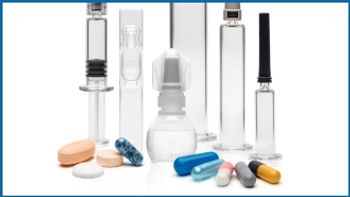
Self-Assembly Nanotechnology Improves Microencapsulation
Self-Assembly Nanotechnology Improves Microencapsulation
Though microencapsulation is a promising technique for drug delivery, traditional production methods require multiple steps that could affect the drug molecule. With sacrificial core templating, for example, microcapsules are made by layering a coating onto a template or a core. The core must be dissolved or burned out to form a hollow center, which could damage the drug or its carrier. In addition, techniques using flow methods only produce large capsules and have limited applications.
The Rice technique¹ involves self-assembly, which means that hollow spheres form spontaneously when certain polymer and salt components are combined. “If you know how to mix things, you can make microcapsules,” says Michael S. Wong, assistant professor of Chemical Engineering at Rice. “That’s the novelty of what we’ve been able to do. It’s easy and has a lot of potential applications.”
Researchers mix together three common off-the-shelf ingredients: a water-soluble, cationic polymer such as polylisine or polyallylamine, citric acid, and silica nanoparticles. The mixing process occurs in water at room temperature, under normal pressure, and at mild, near-neutral pHs. Upon mixing, 1–4-µm particles form in less than a minute. According to Wong, the structures hold up under their own weight and will not puncture or collapse like deflated balloons. In addition, the research team believes the technique will be suitable for large-scale production.
Because the process occurs in water, any chemical or drug that’s suspended in the water gets trapped inside the hollow sphere when it forms. To encapsulate a drug particle, for example, the team adds the “cargo” to the solution and then mixes in the other components. A hollow sphere naturally forms around the droplet of water that contains one drug molecule. Says Wong, “It’s green chemistry. You don’t have to waste solvents and it happens very easily, quickly, and nondestructively.”
One application of interest could be timed and controlled drug release in the body. The research team is currently exploring how to use factors such as pH level or temperature to prompt the microcapsules to open and release drugs. The team has already experimented with magnetic microcapsules (using iron oxide nanoparticles rather than silica) that enable physicians to control exactly where the drug will be released using magnets.
The group also is exploring how various molecules affect the self-assembly chemistry and how to make the spheres monodispersive. “We’re now trying to make the chemistry such that the spheres will all be the same size. And we’re on the right track,” says Wong.
–Kaylynn Chiarello
¹An in-depth discussion of the methodology is presented elsewhere (Adv. Mater. 17, 1145–1150 [2005]).
Newsletter
Get the essential updates shaping the future of pharma manufacturing and compliance—subscribe today to Pharmaceutical Technology and never miss a breakthrough.




